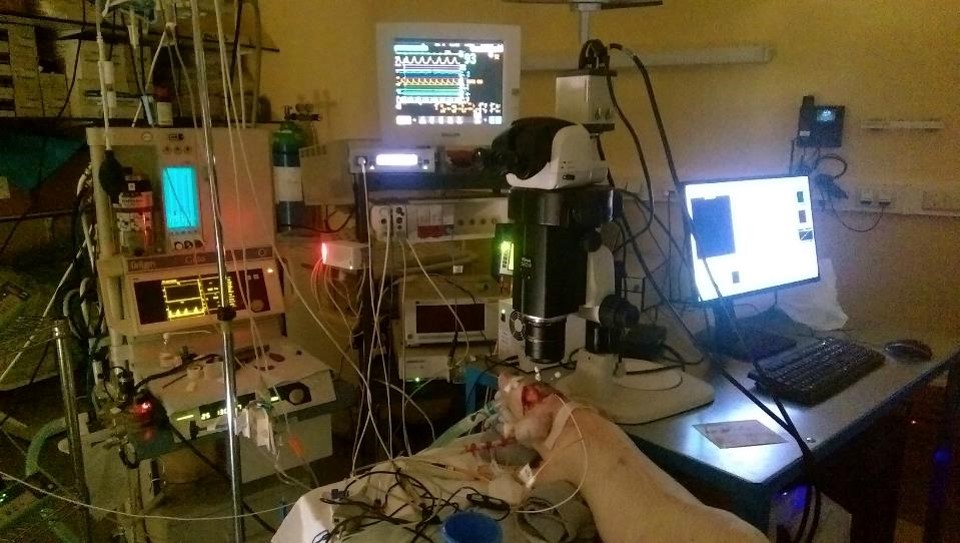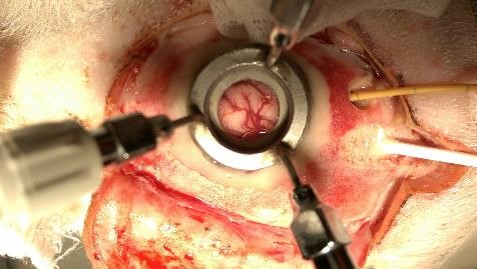Leuven autoregulation study
The goal of this research project is to enhance the understanding of cerebral autoregulation using an experimental setting. The use of this model allows fundamental research questions to be answered and could facilitate translation of concepts such as optimal cerebral perfusion pressure (CPPopt) determination to the clinical practice. To maximize the translational potential to the clinic a well controlled model was chosen (figure 1). The superficial pial arterioles are generally considered to be the main site of resistance adaptation and are directly studied in our experiments by placement of a closed cranial window (figure 2). We adapted the cranial window model so that measurements of the pial arteriolar diameter can be performed while simultaneously measuring the speed of red blood cells traveling through the pial arterioles (shown in the video below). Combining arteriolar diameter and red blood cell velocity allows determination of cerebral blood flow on the level of individual blood vessels.


Showing a recording from our study. The red blood cells, shown in green, are traveling through the pial arterioles to obtain knowledge about the blood flow in individual blood vessels.
For more information about this study:
Please contact Prof. dr. Bart Depreitere, University Hospital Leuven, Belgium.
✉ bart.depreitere@uzleuven.be
